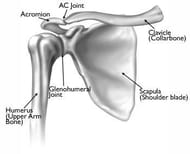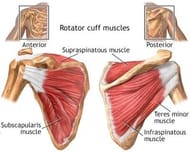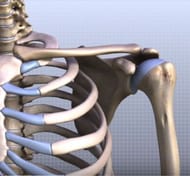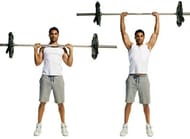In the previous article, we discussed how the upright row is an exercise that can wreck your shoulders; In this piece, we’ll take a look at another controversial exercise i.e. behind the neck shoulder press, which has divided opinion in the fitness community.
Some are of the opinion that this exercise causes shoulder injury and some are of the opinion that behind the neck press is superior than front shoulder press as it targets lateral and rear deltoid.
Now before we delve into the topic, it is very important to get a very basic understanding of shoulder joint anatomy. Shoulder joint in scientific terms is known as the Glenohumeral joint and it made of the upper arm bone scientifically known as the Humerus and the shoulder blade scientifically known as the scapula. These two bones join together to articulate and form the Glenohumeral joint.

Now this joint is ball and socket joint, it is like a baseball into a baseball glove. And this joint has the most freedom of movement out of all joints in the body which can rotate a complete 360 degrees.
The Glenohumeral joint is held up together by a group of muscles known as the rotator cuff muscles which are Supraspinatus, Infraspinatus , Subscapularis and Teres minor . These muscles are responsible for making sure that the Glenohumeral joint maintains its structural integrity.

Rotator cuff muscles are responsible for a multiple range of motions, shoulder flexion, extension, abduction, adduction, internal rotation and external rotation. So, it is important that you have strong and flexible rotator cuff muscles.
Understanding the shoulder press
A front shoulder press is one in which the angle of the arms is tilted slightly forward and behind the neck press is one in which the angle of arms are parallel to the body. Both front and behind the neck shoulder press target all three shoulder heads and the main muscle that is targeted on both the movements is the front deltoid. So, whether you do front shoulder press or behind the neck shoulder press, you are essentially targeting the same muscle group.

Now, when you look at the natural angle of the shoulder joint, it is slightly tilted towards the front and this angle is very unnatural to get into a behind the neck position. Let's take an example of a suitcase or a big box when u lift a suitcase or a big box overhead, the lifting movement naturally replicates a front shoulder press. Which means you are never going to lift a suitcase or a big box in a behind the neck position because it is not a natural position for shoulders to hold heavy weight.


When you perform behind the neck press, your shoulder gets into a hyper external rotation and the rotator cuff muscles whose function is to stabilize your shoulder joint gets stretched, and if you load weight in this position there is a high chance that you can get rotator cuff tendon injury or shoulder impingement. This injury doesn’t happen overnight, it can occur over a period of time.
Conclusion
Behind the neck press is a highly risky exercise with potential for shoulder impingement or rotator cuff injury. It is best to stick to front shoulder press, side lateral raise and face pulls to target all heads of your shoulder.
Shop Neck Pain Pillows Online at the Best Prices
